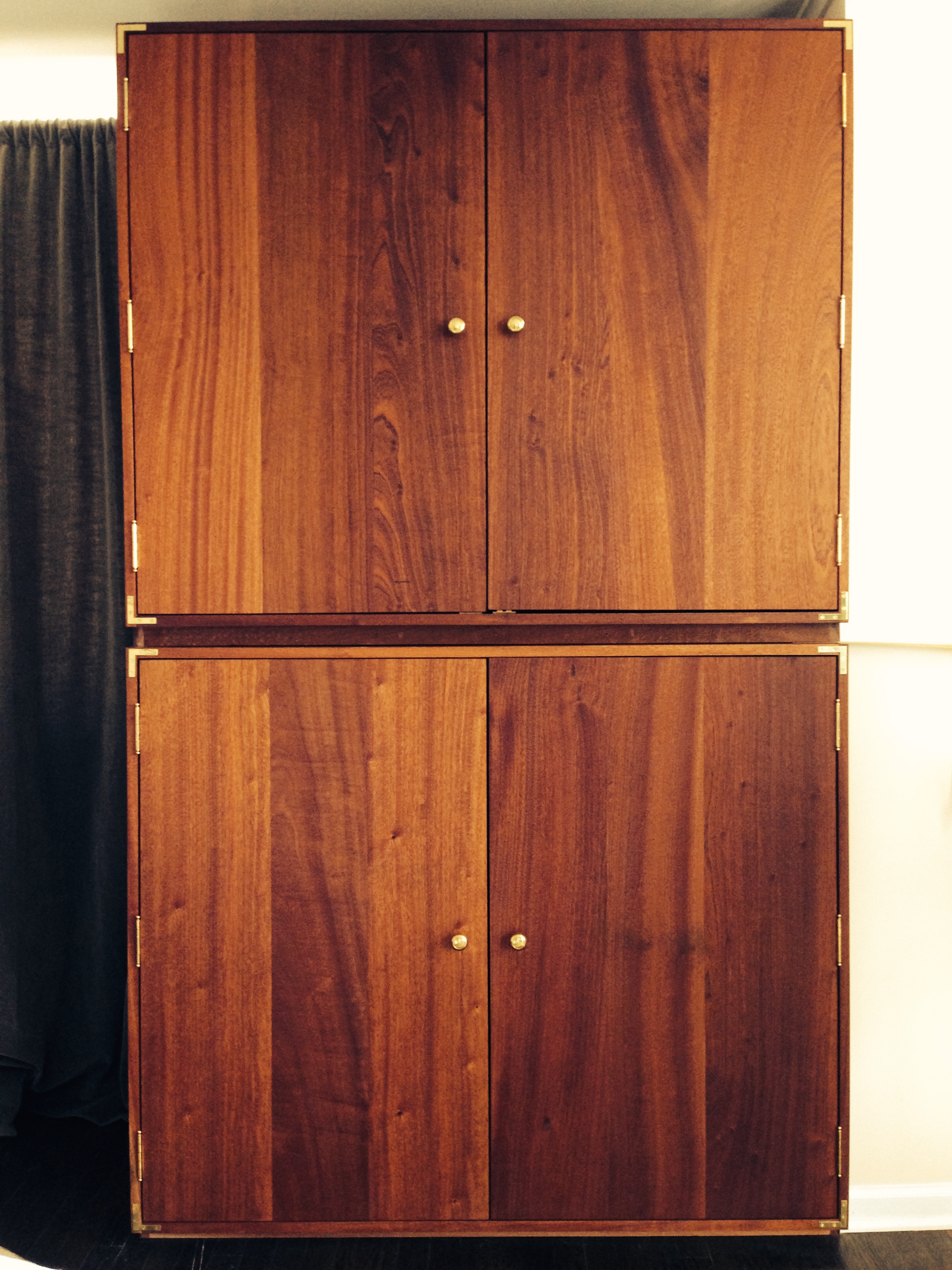Niche Interest
Gasp! Belts and braces commingling.
The professional organizer, like the etiquette expert, lives off the poor habits of other people. They seem to range from the genuinely helpful to the loony: I was recently made aware of Marie Kondo, a Japanese decluttering expert who communes with her socks. She is highly in demand, which is perhaps a reflection of the level of desperation the public suffers beneath when confronted by great heaps of personal possessions. I don’t speak to my socks, but I endorse any organizing that begins with consolidating one's wardrobe. But that’s where the agreement ends, I’m afraid; the professionals I’ve met would have major problems with some of my more cherished habits.
When I recently had an armoire made, I envisioned specialized hanging options for ties, belts and braces, all in complimenting solid brass. The problem with these purpose-built solutions, though, is that if the collections grows, or seasons or preferences change, the hanging options remain static. I eventually settled upon the simplest configuration: four identical twenty-peg brass plates. These provide ample spots for ties, and multiple ways of hanging or wedging belts and braces. This universal multi-storage solution works well for me, but I understand that a professional organizer might be disappointed to learn that sometimes belts make it into the braces section and that I have, on occasion, appropriated a peg or two from the tie section to accommodate a scarf.
Hands off my trees.
Making organization mobile presents further challenges. When space is limited, the professional organizer begins recommending a number of crafty methods for cramming more into less. The most common of these, which, on account of being universally known, has lost its thin glaze of cleverness: stuffing socks and underpants into shoes is just not that revelatory. I also seriously question just how much space is really saved; underwear laid flat doesn't consume much space, and I’ve never known a few pairs of lightweight hose to bust a zipper. Also—and this really seals it for me—I travel with shoe trees, a notion that would unhinge most organizers I’ve met. Do they add weight? Yes, but they also keep my shoes from warping while traveling, something that becomes critical when rotating no more than two pairs—which is my personal limit for any trip under ten days.
One fully occupied plate of pegs.
My final violation of the professional organizer’s code is somewhat philosophical. Whereas the common principle would be to build storage around the size (or expected size) of a given wardrobe, I build my wardrobe to the size of my available storage. I realize this sounds like little more than a clever chiasmus, but I’m serious about enforcing limitations. I have precisely thirty-six pegs for ties, after which point I will initiate a one-in one-out policy. I’m guessing I can fit a dozen suits or odd jackets in the upper section of my armoire before lapels become flattened, and I have no more than twelve spaces for shoes. This, more than any other principle of organization, requires discipline.
The humorous subplot to this supposed discipline is that while many people might think twelve pairs of shoes and three dozen neckties plenty, these volumes are rather scant for the clothes enthusiast. But I imagine even those who can count ties on one hand have, in some other category, plenty of fat to cut. In my experience, t-shirt hoarders and athletic gear junkies have nothing to be smug about; when I say twelve shoes, I’m including those for exercise.


























